Articles of interest
Home
News snips
Now spinning
Articles
Products
Links
About me
contact Webmaster
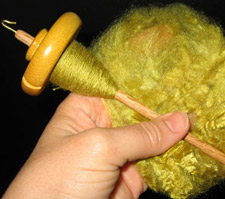
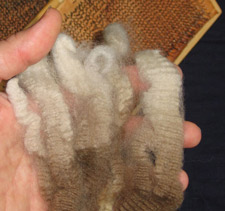
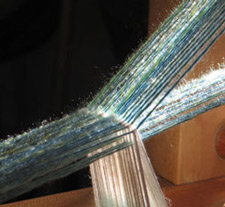
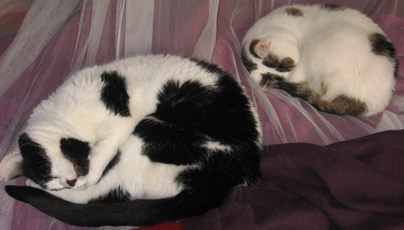

Articles of interest ...to make life more interesting
These articles come from my notebooks.
The work and opinions they contain are my own.
They exist because I found them exciting — and I hope they'll light the spark in your eyes, too. If you share them, please mention this website as their source. I thank you for that in advance!
Do you have a comment? I'd love to hear from you! Click here to send me an e-mail.
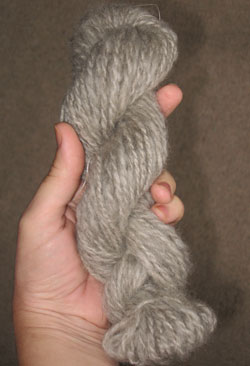
Woollen, The Story of Longdraw Drafting.
True woollen yarns are rare these days, as modern spinners abandon hand-carding in favour of commercial fibre preparations. But woollens still have a place in our world and our hearts; and the longdraw technique used to spin them is comfortable and easy to learn. The yarns are warm, lofty, airy, snuggly -- and worth it! (This article includes a video player which may be slow to load on dial-up connections.)
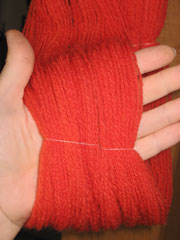
Worsted, Adventures with Shortdraw Drafting.
Long ago, wool yarns were described as "worsted", or "woollen", or something in-between. Worsted spinning is done with a short draw -- a short drafting movement. This technique has many names: worsted drafting, short-draw, inchworm, forward-draft.... It's simple and straightforward, as this video demonstrates. (This article includes a video player which may be slow to load on dial-up connections.)
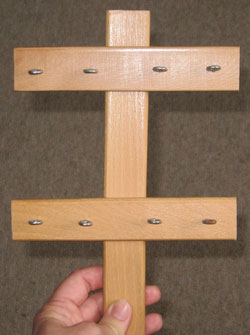
A Kate for charkha spindles.
Despite its many merits, the charkha isn't an ideal tool for plying. Most of us decide to ply onto another wheel, holding the charkha spindles in our hands. The result: snarled yarns and stab-wounds from the pointy spindles! ...This simple, cheap, easy-to-make kate takes care of all those problems -- and it works like a charm.
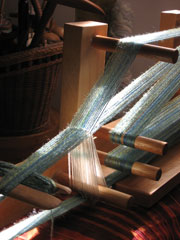
Inkle weaving, an introduction.
With all its strings and pegs, an inkle loom can look intimidating -- and that's too bad, because it's a useful, friendly tool. It's of special interest to handspinners, as beautiful bands and ribbons can be woven from those leftover "orphan" skeins of handspun. (This article includes a video player which may be slow to load on dial-up connections.)
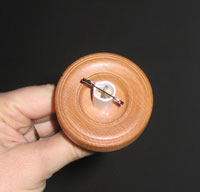
Spindle protectors.
The hook of a top-whorl spindle is its most vulnerable part. Sooner or later, all of us know the heartbreak of a once-perfect spindle with a bent hook. ...This simple spindle protector takes just minutes to make and costs only pennies. It won't prevent every possible mishap, but it can sure help!
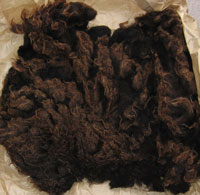
Washing fleece.
Books, articles, and frightening stories abound on the subject of washing raw fleece. Here's the method I use, in all its low-tech glory. It's not the only approach, but it works very well. ...And before you start, heed these words of encouragement: washing wool just isn't that difficult!
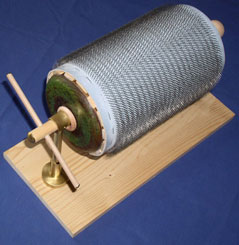
A minimalist carder.
Carding fiber by hand can be a slow process, and it presents a real challenge when you want to blend large amounts of fiber without variations. This minimalist carding drum is easy to build and can speed up the carding process many times over -- for just a fraction of the cost of a commercial drum carder.
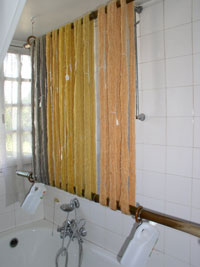
A low-cost, no-fuss yarn blocker!
Where there's a will, there's a way. Where there's a need, there's a "fix" -- and here's proof: a yarn blocker you can make in less than an hour. It costs almost nothing, involves no sophisticated woodworking skills, becomes almost invisible when not in use -- and best of all, it works!